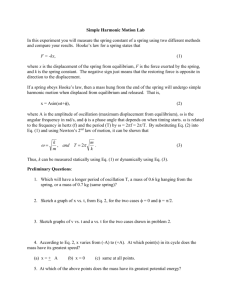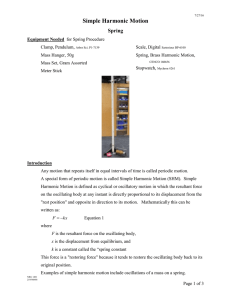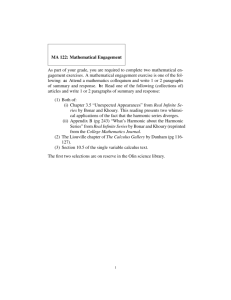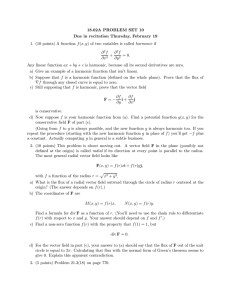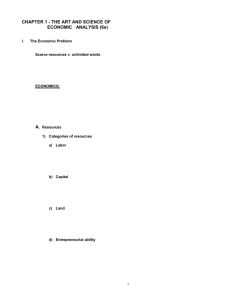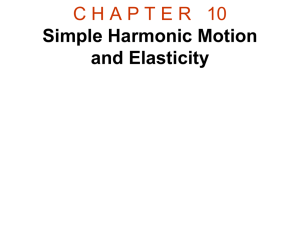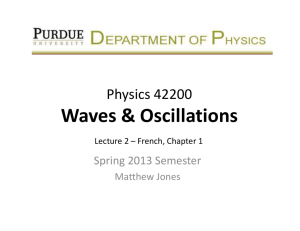Simple Harmonic Motion
advertisement
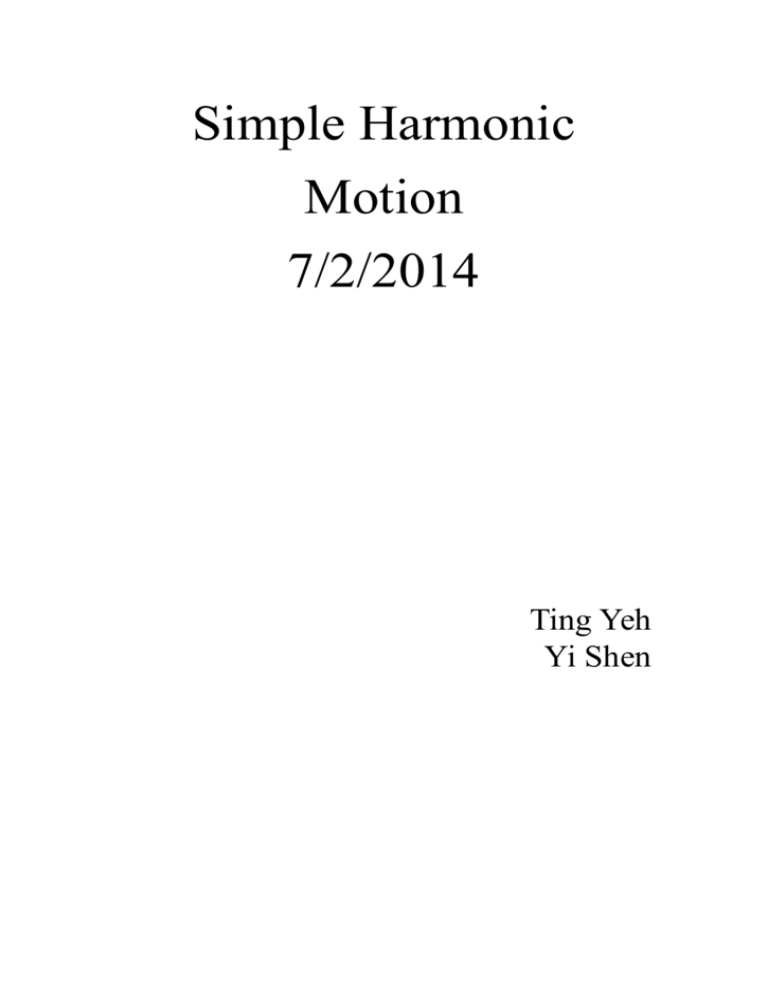
Simple Harmonic Motion 7/2/2014 Ting Yeh Yi Shen Purpose: In this experiment we means to find the spring constant in two different ways- static and dynamic. In the first part of the experiment, we measured the displacement of the spring with different mass 2 to get the static constant. In part two we measured the period of simple harmonic motion of releasing mass with consideration of the mass of spring in order to get dynamic constant. Equipment: Spring Four weights (m1, m2, m3, and m4) Ruler Leveling instrument (000935) Stand Clamp Data and analysis: Table 1. Static case of Simple Harmonic motion M2 (kg) Xi (m) 0.20044 0.1 0.02 0.07077 0.22 0.12 0.19 0.27 0.5 Xf (m) 0.2 0.2 0.2 0.2 0.2 0.2 0.2 0.2 0.2 0.283 0.241 0.208 0.222 0.289 0.249 0.268 0.301 0.401 Table 2. Dynamic case of Simple Harmonic Motion M (kg) t (10 cycles) (s) T=t/10 (s) T^2 (s^2) 0.200 5.59 0.559 0.312 0.100 3.69 0.369 0.136 0.120 4.37 0.437 0.191 0.070 3.37 0.337 0.114 0.220 5.75 0.575 0.331 0.300 7.10 0.710 0.504 0.320 7.09 0.709 0.503 0.290 6.74 0.674 0.454 0.500 8.81 0.881 0.776 M is the mass of the load in the spring system t is the time required for the mass spring system to complete 10 cycles T is the period of the mass spring system X is how much the spring stretched. Standard curve between Mass (M2) and displacement (x). Displacement X is y axis; M2 is x axis. Standard curve between Mass and Period squared (T^2). T^2 is y axis; m is x axis. For simple Harmonic Motion F KX 2 d x KX ma m dt dt 2 K x0 m k m T 2 2 d x 2 Therefore: T 2 m K For Part I: m g kx k 0.20044 * 9.76 / .083 23 .6n / m 2 g x m2 k g slope k g 9.76 K 24 .3n / m static slope 0.4023 g 9.7946 m s 2 In Part II: m m 1 / 3m 4 2m 4 2m eff spring spring 2 T 2 2 T k k k 3k assume : T 2 am b slope a e% 4 2 4 2 K 4 2 / 1.5836 24 .9n / m dynamics k a kd k s 24 .9 24 .3 *100 % *100 % 2.4% kd ks 24 .3 24 .9 2 2 For the mass of the spring: 4 2 m 3k b s m d 3 * 24 .9 * 0.004 0.007568 kg s 4 2 3k 4 2 d mmea su re 0.0281 kg b e% m m calculate measure *100 % 0.007568 0.0281 *100 % 73 .1% m 0.0281 measure Note: that b is really small indicates that spring mass can be ignored Discussion: In this experiment, we got the static K=24.3 N/m and the dynamic K=24.9N/m respectively with an error of 2.00%. It seems like the percentage error between the static and dynamic spring constant is fine. However, once we consider the mass of the spring into the equation and redo the mass of it, the percentage error comes up with 73.1%. As we noted, which can also be seen in the graph of T^2-m, that, the b is relatively small. This fact indicates that the mass of the spring does not make significant change in our calculation of dynamic k. After discussion in our group we concluded that:one of the ways to avoid the error in the future would be to use a spring of negligible mass and also to not consider the mass of the spring in the system.
